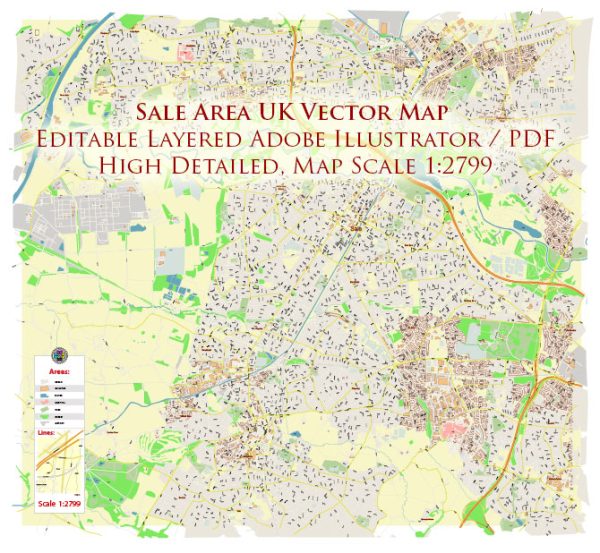The Sale area, located in Greater Manchester, England, has a rich history that is closely tied to the broader historical and industrial developments of the region. Here is a brief history of the Sale area in the UK:
Early History:
- The history of Sale dates back to prehistoric times, with evidence of human settlement in the area during the Bronze Age and Roman periods. Archaeological finds suggest that the land was used for agriculture, and there was likely a Roman road passing through the region.
Medieval and Early Modern Period:
- Sale was a small, rural community during the medieval and early modern periods, characterized by farming and cottage industries. It remained relatively isolated and untouched by the industrialization that was transforming other parts of Greater Manchester.
19th Century:
- Sale began to change significantly during the 19th century with the construction of the Bridgewater Canal, which connected Manchester to the port of Liverpool. The canal facilitated the transportation of goods and raw materials, spurring economic growth.
- The arrival of the railway in the mid-19th century further accelerated development. Sale became a commuter town for Manchester, and its population began to grow as people moved there to escape the industrial pollution and overcrowding of the city.
20th Century:
- The 20th century saw continued suburbanization and urban expansion in Sale. The town’s population increased, and it became more connected to Greater Manchester as the region’s industrial and commercial sectors thrived.
- During World War II, Sale experienced bombing raids, like many towns in the Greater Manchester area, as it was a target for German air raids due to its industrial significance.
Post-War Era:
- After World War II, Sale continued to grow and modernize. Residential developments expanded, and the town saw changes in its local economy, shifting away from heavy industry and towards a more diverse economic base.
Contemporary Period:
- In recent years, Sale has become a desirable suburban area for families and commuters, benefiting from its proximity to Manchester, good schools, and recreational amenities, such as parks and the nearby River Mersey.
- Sale’s historical and architectural heritage has been preserved in some areas, and there are notable buildings and landmarks that reflect its past, including Sale Town Hall and St. Martin’s Church.
Today, Sale is a thriving suburban town in Greater Manchester, offering a blend of modern amenities and a historical legacy that reflects the changes and developments in the region over the centuries. Its history as a commuter town and its connection to Greater Manchester’s industrial past are integral parts of its identity.


 Author: Kirill Shrayber, Ph.D.
Author: Kirill Shrayber, Ph.D.